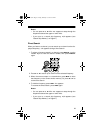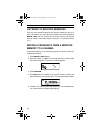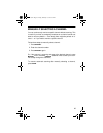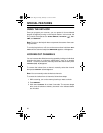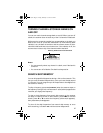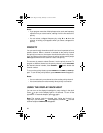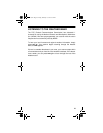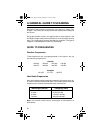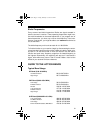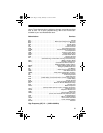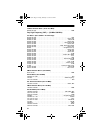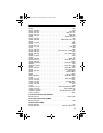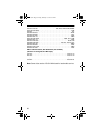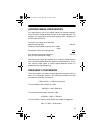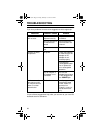
31
Birdie Frequencies
Every scanner has birdie frequencies. Birdies are signals created in-
side the scanner’s receiver. These operating frequencies might inter-
fere with broadcasts on the same frequencies. If you program one of
these frequencies, you hear only noise on that frequency. If the inter-
ference is not severe, you might be able to turn
SQUELCH
clockwise to
cut out the birdie.
The birdie frequency on this unit to watch for is 146.65 MHz.
To find the birdies on your receiver, begin by disconnecting the anten-
na and moving it away from the receiver. Make sure that no other near-
by radio or TV sets are turned on near the receiver. Use the search
function and scan every frequency range from its lowest frequency to
the highest. Occasionally, the searching will stop as if it had found a
signal, often without any sound. That is a birdie. Make a list of all the
birdies in your scanner for future reference.
GUIDE TO THE ACTION BANDS
Typical Band Usage
HF Band (3.00–30.0 MHz)
10-Meter Amateur
29.00–29.70 MHz
High Range
29.70–29.90 MHz
VHF Band (30.00–300.0 MHz)
Low Range
30.00–50.00 MHz
6-Meter Amateur
50.00–54.00 MHz
Aircraft
108.00–136.97 MHz
U.S. Government
137.00–144.00 MHz
2-Meter Amateur
144.00–148.00 MHz
High Range
148.00–174.00 MHz
UHF Band (300.00 MHz–3.0 GHz)
U. S. Government
406.00–450.00 MHz
0.6-Meter Amateur
420.00–450.00 MHz
Low Range
450.00–470.00 MHz
FM-TV Audio Broadcast, Wide Band
470.00–512.00 MHz
20-311a.fm Page 31 Friday, February 12, 1999 4:51 PM



